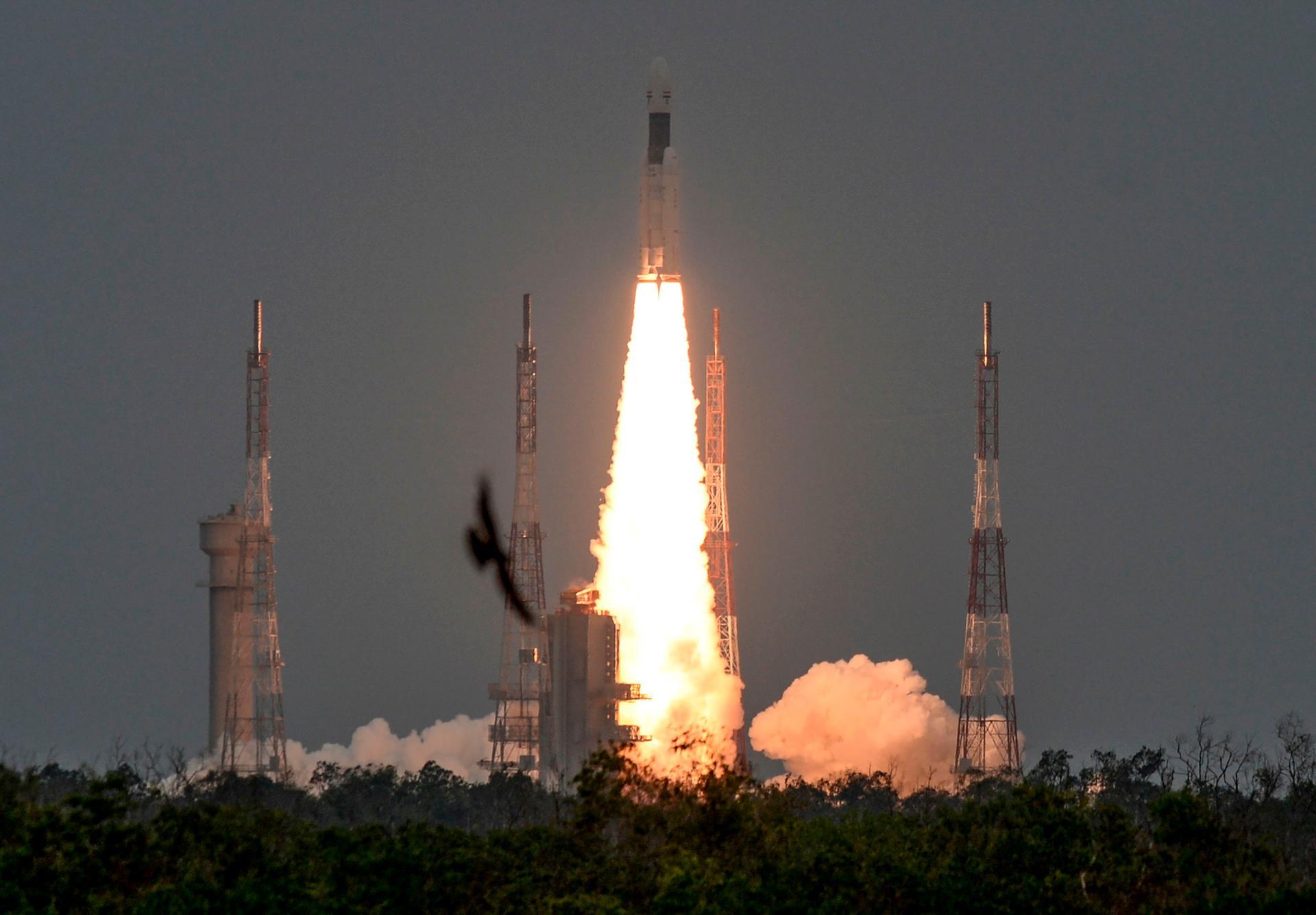India's Chandrayaan-2 blasts off to the Moon
By Aliheydar_Rzayev Tuesday, 23 July 2019 3:48 AM

Chandrayaan-2, India’s lunar lander, lifted off aboard a rocket from the Satish Dhawan Space Centre on Monday afternoon, a week after the first attempt was aborted in the final hour before launch.
India’s homegrown GSLV-Mark III rocket, standing 43 metres tall and making its first operational flight, roared into space aboard a plume of flame.
The launch window was narrow: a single minute in which to pitch the rocket into the perfect position above the planet. Within half an hour, the rocket had completed its objective, releasing Chandrayaan-2 into orbit around the Earth.
A video showed the spacecraft detaching from the rocket, its golden-coloured insulation glinting in the sunlight, a blue wash of ocean beneath it.
After the launch, K Sivan, the head of the Indian Space Research Organisation (ISRO), thanked his scientists for resolving the problem that had cancelled the previous launch plan.
 One of the nine helium tanks that helped keep the liquid hydrogen fuel at a low temperature showed a small drop in pressure.
One of the nine helium tanks that helped keep the liquid hydrogen fuel at a low temperature showed a small drop in pressure.
“We fixed the snag and bounced back with flying colours,” Mr Sivan told reporters. “The work done in the 24 hours after the snag [was discovered] was mind-boggling. Corrections were made, tests were done and confirmed.”
Prime Minister Narendra Modi, who watched the launch in Delhi via a special live feed, congratulated ISRO on the successful start to a mission that was “Indian in heart, Indian in spirit!”
What will enthuse every Indian, he said, “is the fact that #Chandrayaan2 is a fully indigenous mission.” Such projects “will further encourage our bright youngsters towards science, top quality research and innovation.”
Chandrayaan-2 will now make its leisurely way towards the south pole of the Moon, where no country has ever sent a lander before.
Fifty years ago, the Apollo 11 astronauts needed just two days to travel to the Moon. Chandrayaan-2, however, will first circle the Earth for 23 days, its radius of orbit growing wider and wider. Using the gravity of the Earth, it will gather energy and momentum to then sling itself through the 384,400 kilometres to the Moon.
Having spent a week in transit, Chandrayaan-2 will orbit the Moon for another two weeks before the lander, named Vikram, detaches from the spacecraft and touches down. If the mission succeeds, India will become only the fourth country - after the US, Russia and China - to achieve a soft landing on the Moon.
The landing is scheduled for early in September, around the time that a Moon day - which lasts 14 Earth days - begins. That will allow maximum sunlight for a six-wheeled, solar-powered rover, named Pragyan, to creep along the Moon’s surface at the rate of a centimetre a second to test lunar soil and take photographs.
An ISRO official told the Hindustan Times newspaper that the week’s delay in launch would not significantly cut short the rover’s time in lunar daylight.
Chandrayaan-2 was initially supposed to spend five days travelling to the Moon and then 28 days in lunar orbit. Although the transit has swelled by two days, the official said, shrinking the duration spent circling the moon will give the rover enough time to do its work.
The National




























Add new comment